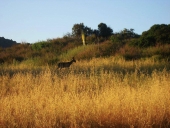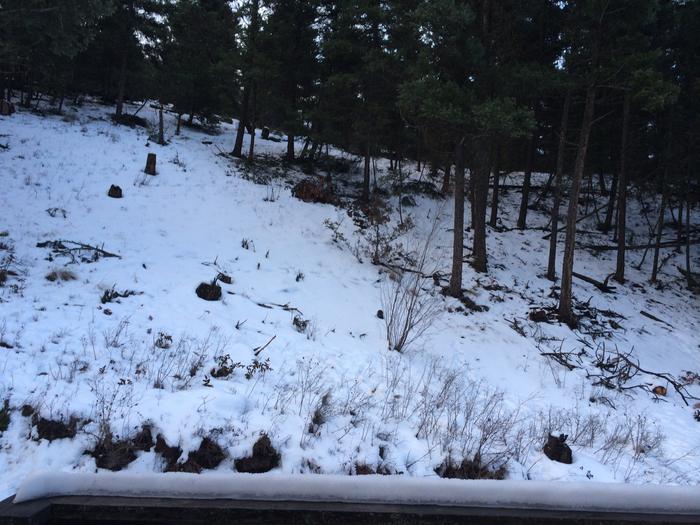posted 7 years ago
There are plenty of things that can be done.
In some locations it is required to have a certain amount of water catchment volume in order to build a house. I was at a spiritual community in California that had an acre pond that was 10 feet deep above it, by legal requirement. The pond had koi in it. :)
A person can have a sprinkler system set up that will either turn on automatically via a thermostat, or is available for the fire fighting crew to turn on if you have evacuated. I am thinking of putting in fire hydrants on gravity feed from my creek, with fire hoses and fire axes and spades in boxes beside them. If you do not have gravity feed, get a pump, and keep it in good running order with fuel safely stowed nearby.
While the metal roof you describe might not ignite with cinders, the siding might be combustible, and light up from the heat. Things like vinyl and cedar siding are really super flammable. There are some new concrete boards that look like wooden siding, and are fire proof. Things to consider then, are things like how much of your house can actually catch fire? Like with the siding example, there are options to most super flammable construction materials. A strawbale house, for instance, is surprisingly fire proof. You can take a flame thrower to a straw bale and it will only scorch the outer looser bits. Once the bale is encased in cob, clay slip, or other plaster/stucco, it is pretty much impossible for even a scorching. Light Clay Straw (lose straw coated with clay slip and then pushed into forms) construction is similar. The same is true of cordwood. A piece of firewood does not burn from it's round cut ends. You can take a flamethrower to a cordwood wall and you will only scorch the outer wood; it will not burn.
What direction do your hot summer winds come from. This is likely your Fire Vector. Concentrate on protecting your house from this direction, including moist gardens, ponds, swales, and a focus on leafy rather than needle (conifer) trees. Conifers go up in flames; deciduous trees drop the fire to the ground.
Create safe muster points for your family and your local community.
If the fire risk is high, if you have a lawn mow it and rake it to get out the thatch and any other dry material out. Then water it. Consider not having a lawn if you do not have the water to keep it green. A green lawn is a decent fire guard; a dry lawn is pretty flammable. Clean up any dry leaves or dead branches/wood. Dig a trench around your property down to bare mineral soil (this is what forest fire fighters call a fire guard).
Unite with neighbors to develop a fire strategy and response plan. You might be the first on the scene at your neighbors place, and might not know where to turn the water on.
If you do have to evacuate, close all the doors and windows tight, grab your bag that you have prepared in advance that has your valuable documents and irreplaceable photos and small heirlooms and such, and drive calmly, and safely. If you have a pick-up truck, then grab your chainsaw, handsaws, and an ax, so that if a burning tree blocks your road, you can still escape. Know where you are going, and what to expect there. Listen to the radio, and take advice from the fire marshal , fire department, or police seriously.
That's all I can think of off the cuff.
:)
"Never doubt that a small group of thoughtful, committed citizens can change the world; indeed, it's the only thing that ever has."-Margaret Mead "The only thing worse than being blind, is having sight but no vision."-Helen Keller







 1
1








 1
1





 1
1




![Filename: wildfire-mitigation.jpg
Description: Wildfire mitigation [Thumbnail for wildfire-mitigation.jpg]](/t/75841/a/58010/wildfire-mitigation.jpg)








